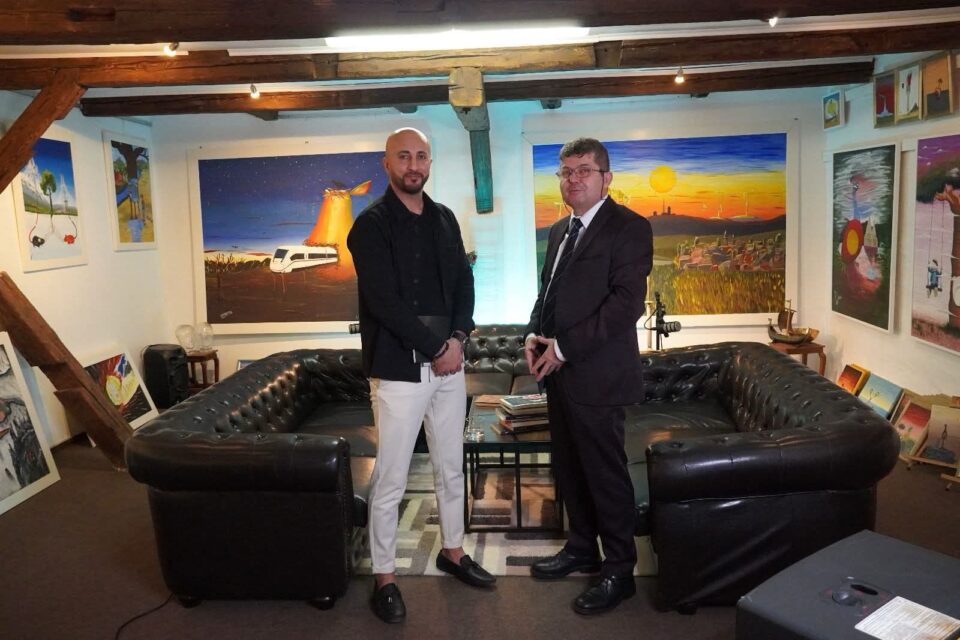Sema
Hasso Hormi
During my visit to the studio of the artist and painter Qasim al-Sharqi, I observed that each painting he creates tells a complete story in itself, rich in symbols and meanings that require deep contemplation to decipher. For example, one of the paintings might feature a royal peacock surrounded by geometric shapes symbolizing the universe and eternity, while another portrays faceless figures that represent the suffering of refugees and the loss of identity. The symbols used in his works go beyond reflecting Qasim’s individual experience to become part of the collective experience historically lived by the Yazidis, giving his works a human rhythm that resonates with the contemporary world.
Al-Sharqi adopts advanced painting techniques that infuse modernity and appeal into his artworks. He uses vibrant colors, abstract shapes, and complex visual compositions to create lively pieces that resonate with contemporary audiences. This fusion of tradition and modernity lends his artistic message a new visual character and a human dimension that connects with a multicultural audience.
Qasim al-Sharqi’s experience is a powerful example of art’s ability to blend the past and present with awareness and creativity, creating a renewed means of preserving the Yazidi heritage and sharing it with the broader world. His paintings are not only a reflection of his identity and culture but also convey a deeper message about the importance of preserving human identity in a rapidly changing world.
Qasim al-Sharqi’s creativity reveals the power of art to transcend geographical and temporal boundaries, conveying universal human messages. His work reflects the strength of will that the artist possesses to create beauty even in the darkest circumstances, turning his art into a voice for those who have faced injustice and suffering. It reminds us that, at its core, art is a bridge that connects humanity to both its inner and outer worlds.
In conclusion, Qasim al-Sharqi is a prominent symbol of a generation of Yazidis who, despite pain and loss, succeeded in transforming their tragedies into a source of strength, carrying their voice to the entire world. His recognition comes from being a true representation of human resilience and an ideal embodiment of the idea that beauty is born from suffering.

